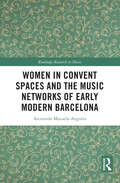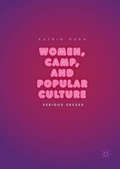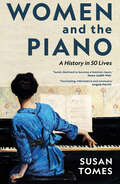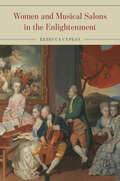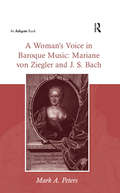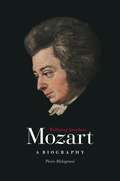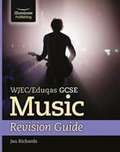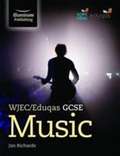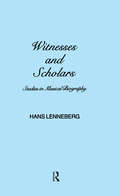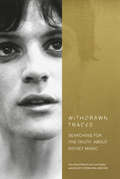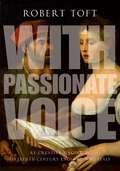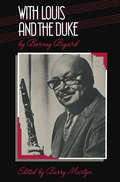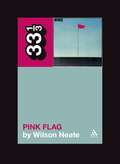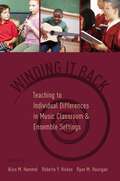- Table View
- List View
Women in Convent Spaces and the Music Networks of Early Modern Barcelona (Routledge Research in Music)
by Ascensión Mazuela-AnguitaThis book presents the first study of music in convent life in a single Hispanic city, Barcelona, during the early modern era. Exploring how convents were involved in the musical networks operating in sixteenth-century Barcelona, it challenges the invisibility of women in music history and reveals the intrinsic role played by nuns and lay women in the city’s urban musical culture. Drawing on a wide range of archival sources, this innovative study offers a cross-disciplinary approach that not only reveals details of the rich musical life in Barcelona’s nunneries, but shows how they took part in wider national and transnational networks of musical distribution, including religious, commercial, and social dimensions of music. The connections of Barcelona convents to networks for the dissemination of music in and outside the city provide a rich example of the close relationship between musical networks, urban society, and popular culture. Addressing how music was understood as a marker of identity, prestige, and social status and, above all, as a conduit between earth and heaven, this book provides new insights into how women shaped musical traditions in the urban context. It is essential reading for scholars of early modern history, musicology, history of religion, and gender studies, as well as all those with an interest in urban history and the city of Barcelona. The book is supported by additional digital appendices, which include: Records of inquiries into the lineage of Santa Maria de Jonqueres nuns Development of the collections of choir books belonging to the convents of Santa Maria de Jonqueres and Sant Antoni i Santa Clara
Women, Camp, and Popular Culture: Serious Excess
by Katrin HornThis innovative study claims camp as a critical, yet pleasurable strategy for women’s engagement with contemporary popular culture as exemplified by 30 Rock or Lady Gaga. In detailed analyses of lesbian cinema, postfeminist TV, and popular music, the book offers a novel take on its subject. It defines camp as a unique mode of detached attachment, which builds on affective intensity and emotional investment, while strongly encouraging a critical edge.
Women, Camp, and Popular Culture: Serious Excess
by Katrin HornThis innovative study claims camp as a critical, yet pleasurable strategy for women’s engagement with contemporary popular culture as exemplified by 30 Rock or Lady Gaga. In detailed analyses of lesbian cinema, postfeminist TV, and popular music, the book offers a novel take on its subject. It defines camp as a unique mode of detached attachment, which builds on affective intensity and emotional investment, while strongly encouraging a critical edge.
Women and the Piano: A History in 50 Lives
by Susan TomesWomen are an essential part of the history of the piano—but how many women pianists can you name? Throughout most of the piano’s history, women pianists lacked access to formal training and were excluded from male-dominated performance spaces. Even the modern piano’s keys were designed without consideration of women’s typically smaller hands. Yet despite their music being largely confined to the domestic sphere, women continued to play, perform, and compose on their own terms. Celebrated pianist and author Susan Tomes traces fifty such women across the piano’s history. Including now-famous names such as Clara Schumann and Fanny Mendelssohn, Tomes also highlights overlooked women: from Hélène de Montgeroult, whose playing saved her life during the French Revolution, to Leopoldine Wittgenstein, influential Viennese salonnière, and Hazel Scott, the first Black performer in the United States to have a nationally syndicated TV show. From Maria Szymanowska to Nina Simone, and including interviews with women performing today, this is a much-needed corrective to our understanding of the piano—and a timely testament to women’s musical lives.
Women and the Nineteenth-Century Lied
by Aisling Kenny Susan WollenbergThis book bridges a gap in existing scholarship by foregrounding the contribution of women to the nineteenth-century Lied. Building on the pioneering work of scholars in recent years, it consolidates recent research on women’s achievements in the genre, and develops an alternative narrative of the Lied that embraces an understanding of the contributions of women, and of the contexts of their engagement with German song and related genres. Lieder composers including Fanny Hensel, Clara Schumann, Pauline Viardot-Garcia and Josephine Lang are considered with a stimulating variety of analytical approaches. In addition to the focus on composers associated with history and theory of the Lied, the various chapters explore the cultural and sociological background to the Lied’s musical environment, as well as engaging with gender studies and discussing performance and pedagogical contexts. The range of subject matter reflects the interdisciplinary nature of current research in the field, and the energy it generates among scholars and performers. Women and the Nineteenth-Century Lied aims to widen readers’ perception of the genre and help promote awareness of women’s contribution to nineteenth-century musical life through critical appraisal of the cultural context of the Lied, encouraging acquaintance with the voices of women composers, and the variety of their contributions to the repertoire.
Women and the Nineteenth-Century Lied
by Aisling Kenny Susan WollenbergThis book bridges a gap in existing scholarship by foregrounding the contribution of women to the nineteenth-century Lied. Building on the pioneering work of scholars in recent years, it consolidates recent research on women’s achievements in the genre, and develops an alternative narrative of the Lied that embraces an understanding of the contributions of women, and of the contexts of their engagement with German song and related genres. Lieder composers including Fanny Hensel, Clara Schumann, Pauline Viardot-Garcia and Josephine Lang are considered with a stimulating variety of analytical approaches. In addition to the focus on composers associated with history and theory of the Lied, the various chapters explore the cultural and sociological background to the Lied’s musical environment, as well as engaging with gender studies and discussing performance and pedagogical contexts. The range of subject matter reflects the interdisciplinary nature of current research in the field, and the energy it generates among scholars and performers. Women and the Nineteenth-Century Lied aims to widen readers’ perception of the genre and help promote awareness of women’s contribution to nineteenth-century musical life through critical appraisal of the cultural context of the Lied, encouraging acquaintance with the voices of women composers, and the variety of their contributions to the repertoire.
Women and Musical Salons in the Enlightenment
by Rebecca CypessA study of musical salons in Europe and North America between 1760 and 1800 and the salon hostesses who shaped their musical worlds. In eighteenth-century Europe and America, musical salons—and the women who hosted and made music in them—played a crucial role in shaping their cultural environments. Musical salons served as a testing ground for new styles, genres, and aesthetic ideals, and they acted as a mediating force, bringing together professional musicians and their audiences of patrons, listeners, and performers. For the salonnière, the musical salon offered a space between the public and private spheres that allowed her to exercise cultural agency. In this book, musicologist and historical keyboardist Rebecca Cypess offers a broad overview of musical salons between 1760 and 1800, placing the figure of the salonnière at its center. Cypess then presents a series of in-depth case studies that meet the salonnière on her own terms. Women such as Anne-Louise Brillon de Jouy in Paris, Marianna Martines in Vienna, Sara Levy in Berlin, Angelica Kauffman in Rome, and Elizabeth Graeme in Philadelphia come to life in multidimensional ways. Crucially, Cypess uses performance as a tool for research, and her interpretations draw on her experience with the instruments and performance practices used in eighteenth-century salons. In this accessible, interdisciplinary book, Cypess explores women’s agency and authorship, reason and sentiment, and the roles of performing, collecting, listening, and conversing in the formation of eighteenth-century musical life.
A Woman's Voice in Baroque Music: Mariane von Ziegler and J.S. Bach
by MarkA. PetersAt the end of his second year in Leipzig, J.S. Bach composed nine sacred cantatas to texts by Leipzig poet Mariane von Ziegler (1695-1760). Despite the fact that these cantatas are Bach's only compositions to texts by a female poet, the works have been largely ignored in the Bach literature. Ziegler was Germany's first female poet laureate, and the book highlights her significance in early eighteenth-century Germany and her commitment to advancing women's rights of self-expression. Peters enriches and enlivens the account with extracts from Ziegler's four published volumes of poetry and prose, and analyses her approach to cantata text composition by arguing that her distinctive conception of the cantata as a genre encouraged Bach's creative musical realizations. In considering Bach's settings of Ziegler's texts, Peters argues that Bach was here pursuing a number of compositional procedures not common in his other sacred cantatas, including experimentation with the order of movements within a cantata, with formal considerations in arias and recitatives, and with the use of instruments, as well as innovative approaches to Vox Christi texts and to texts dealing with speech and silence. A Woman's Voice in Baroque Music is the first book to deal in depth with issues of women in music in relation to Bach, and one of the few comprehensive studies of a specific repertory of Bach's sacred cantatas. It therefore provides a significant new perspective on both Ziegler as poet and cantata librettist and Bach as cantata composer.
A Woman's Voice in Baroque Music: Mariane von Ziegler and J.S. Bach
by MarkA. PetersAt the end of his second year in Leipzig, J.S. Bach composed nine sacred cantatas to texts by Leipzig poet Mariane von Ziegler (1695-1760). Despite the fact that these cantatas are Bach's only compositions to texts by a female poet, the works have been largely ignored in the Bach literature. Ziegler was Germany's first female poet laureate, and the book highlights her significance in early eighteenth-century Germany and her commitment to advancing women's rights of self-expression. Peters enriches and enlivens the account with extracts from Ziegler's four published volumes of poetry and prose, and analyses her approach to cantata text composition by arguing that her distinctive conception of the cantata as a genre encouraged Bach's creative musical realizations. In considering Bach's settings of Ziegler's texts, Peters argues that Bach was here pursuing a number of compositional procedures not common in his other sacred cantatas, including experimentation with the order of movements within a cantata, with formal considerations in arias and recitatives, and with the use of instruments, as well as innovative approaches to Vox Christi texts and to texts dealing with speech and silence. A Woman's Voice in Baroque Music is the first book to deal in depth with issues of women in music in relation to Bach, and one of the few comprehensive studies of a specific repertory of Bach's sacred cantatas. It therefore provides a significant new perspective on both Ziegler as poet and cantata librettist and Bach as cantata composer.
The Woman Composer: Creativity and the Gendered Politics of Musical Composition
by Jill HalsteadUnlike previous anthologizing examinations of women and musical composition, this book concentrates on the reasons why there have been, and continue to be, so few women composers. Jill Halstead focuses on the experiences of nine composers born in the twentieth century (Avril Coleridge Taylor, Grace Williams, Elizabeth Maconchy, Minna Keal, Ruth Gipps, Antoinette Kirkwood, Enid Luff, Judith Bailey and Bryony Jagger) to explore the physiological, social and political factors that have inhibited women from pursuing careers as composers. Is there a biological argument for inferior female creativity? Do social structures, such as marriage, serve to restrict potential women composers? Is the gender of a composer reflected in the music they write? If so, how would this manifest itself? The conclusions that are reached are as complex and challenging as the questions that are raised. This powerful and provocative book aims to open up debate on these issues, which have all too often be avoided by critics and musicologists whose writings have perpetuated arguments that denigrate women's ability to compose. By confronting these arguments, this study will hopefully begin a reassessment of attitudes towards women and music, so that women composers are less of a rarity by the end of the next century.
The Woman Composer: Creativity and the Gendered Politics of Musical Composition
by Jill HalsteadUnlike previous anthologizing examinations of women and musical composition, this book concentrates on the reasons why there have been, and continue to be, so few women composers. Jill Halstead focuses on the experiences of nine composers born in the twentieth century (Avril Coleridge Taylor, Grace Williams, Elizabeth Maconchy, Minna Keal, Ruth Gipps, Antoinette Kirkwood, Enid Luff, Judith Bailey and Bryony Jagger) to explore the physiological, social and political factors that have inhibited women from pursuing careers as composers. Is there a biological argument for inferior female creativity? Do social structures, such as marriage, serve to restrict potential women composers? Is the gender of a composer reflected in the music they write? If so, how would this manifest itself? The conclusions that are reached are as complex and challenging as the questions that are raised. This powerful and provocative book aims to open up debate on these issues, which have all too often be avoided by critics and musicologists whose writings have perpetuated arguments that denigrate women's ability to compose. By confronting these arguments, this study will hopefully begin a reassessment of attitudes towards women and music, so that women composers are less of a rarity by the end of the next century.
Wolfgang Amadeus Mozart: A Biography
by Piero MelograniThis year marks the 250th anniversary of the birth of Wolfgang Amadeus Mozart, one of the most enduringly popular and celebrated composers to have ever lived. His substantial oeuvre contains works that are considered to be among the most exquisite pieces of symphonic, chamber, and choral music ever written. His operas too cast a long shadow over those staged in their wake. And since his untimely death in 1791, he remains an enigmatic figure—the subject of fascination for aficionados and novices alike. Piero Melograni here offers a wholly readable account of Mozart’s remarkable life and times. This masterful biography proceeds from the young Mozart’s earliest years as a Wunderkind—the child prodigy who traveled with his family to perform concerts throughout Europe—to his formative years in Vienna, where he fully absorbed the artistic and intellectual spirit of the Enlightenment, to his deathbed, his unfinished Requiem, and the mystery that still surrounds his burial. Melograni’s deft use of Mozart’s letters throughout confers authority and vitality to his recounting, and his expertise brings Mozart’s eighteenth-century milieu evocatively to life. Written with a gifted historian’s flair for narrative and unencumbered by specialized analyses of Mozart’s music, Melograni’s is the most vivid and enjoyable biography available. At a time when music lovers around the world are paying honor to Mozart and his legacy, Wolfgang Amadeus Mozart will be welcomed by his enthusiasts—or anyone wishing to peer into the mind of one of the greatest composers ever known.
WJEC/Eduqas GCSE Music Revision Guide (PDF)
by Jan RichardsThis GCSE Music revision guide is intended to complement the GCSE Music textbook, and is to be used alongside the information and support given by your teacher. It contains the necessary information that you need to know and learn when studying the GCSE course in Music. It is not a teaching guide, but it is a useful support for you to refer to and use, outlining essential information and musical knowledge, with guidance on how to answer certain types of question in the Appraising examination.
WJEC/Eduqas GCSE Music (PDF)
by Jan RichardsThis book is designed to help with the WJEC/Eduqas GCSE Music course. It is divided into five sections: one section on each of the four areas of study - Section 1 Musical Forms and Devices, Section 2 Music for Ensemble, Section 3 Film Music and Section 4 Popular Music - and a final section, Section 5 GCSE Music: Student Support on student-specific material.
WJEC/Eduqas GCSE Music (PDF)
by Jan RichardsThis book is designed to help with the WJEC/Eduqas GCSE Music course. It is divided into five sections: one section on each of the four areas of study.
Witnesses and Scholars: Studies in Musical Biography (Musicology)
by H. LennebergFirst Published in 1988. Routledge is an imprint of Taylor & Francis, an informa company.
Witnesses and Scholars: Studies in Musical Biography (Musicology)
by H. LennebergFirst Published in 1988. Routledge is an imprint of Taylor & Francis, an informa company.
Withdrawn Traces: Searching for the Truth about Richey Manic, Foreword by Rachel Edwards
by Sara Hawys Roberts Leon NoakesNew discoveries and a fresh perspective, with unprecedented access to Richey's personal archiveOn 1 February 1995, Richey Edwards, guitarist of the Manic Street Preachers, went missing at the age of 27. On the eve of a promotional trip to America, he vanished from his London hotel room, his car later discovered near the Severn Bridge, a notorious suicide spot.Over two decades later, Richey’s disappearance remains one of the most moving, mysterious and unresolved episodes in recent pop culture history. For those with a basic grasp of the facts, Richey's suicide seems obvious and undeniable. However, a closer investigation of his actions in the weeks and months before his disappearance just don’t add up, and until now few have dared to ask the important questions.Withdrawn Traces is the first book written with the co-operation of the Edwards family, testimony from Richey’s closest friends and unprecedented and exclusive access to Richey’s personal archive. In a compelling real-time narrative, the authors examine fresh evidence, uncover overlooked details, profile Richey's state of mind, and brings us closer than ever before to the truth.
With Passionate Voice: Re-Creative Singing in Sixteenth-Century England and Italy
by Robert ToftMusicians in the 16th century had a vastly different understanding of the structure and performance of music than today's performers. In order to transform inexpressively notated music into passionate declamation, Renaissance singers treated scores freely, and it was expected that each would personalize the music through various modifications, which included ornamentation. Their role was one of musical re-creation rather than of simple interpretation--the score represented a blueprint, not a master plan, upon which they as performer built the music. As is now commonly recognized, this flexible approach to scores changed over the centuries; the notation on the page itself became an ostensible musical Urtext and performers began following it much more closely, their sole purpose being to reproduce what was thought to be the composer's intentions. Yet in recent years, scholars and performers are once again freeing themselves from the written page--but the tools for doing so have long been out of reach. With Passionate Voice gives these tools to modern singers of Renaissance music, enabling them to learn and master the art of "re-creative singing." Providing a much-needed historically-informed perspective, author Robert Toft discusses the music of composers ranging from Marchetto Cara to John Dowland in the context of late Renaissance rhetoric, modal theory (and its antecedents in language), and performance traditions. Focusing on period practice in England and Italy, the two countries which produced the music of greatest interest to today's performers, Toft reconstructs the style of sung delivery through contemporary treatises on music, rhetoric and oratory. Toft remains faithful to the ways these principles were explained in the period, and thus breathes new life into this vital art form. With Passionate Voice is sure to be essential for vocalists, teachers and coaches of early music repertoire.
With Passionate Voice: Re-Creative Singing in Sixteenth-Century England and Italy
by Robert ToftMusicians in the 16th century had a vastly different understanding of the structure and performance of music than today's performers. In order to transform inexpressively notated music into passionate declamation, Renaissance singers treated scores freely, and it was expected that each would personalize the music through various modifications, which included ornamentation. Their role was one of musical re-creation rather than of simple interpretation--the score represented a blueprint, not a master plan, upon which they as performer built the music. As is now commonly recognized, this flexible approach to scores changed over the centuries; the notation on the page itself became an ostensible musical Urtext and performers began following it much more closely, their sole purpose being to reproduce what was thought to be the composer's intentions. Yet in recent years, scholars and performers are once again freeing themselves from the written page--but the tools for doing so have long been out of reach. With Passionate Voice gives these tools to modern singers of Renaissance music, enabling them to learn and master the art of "re-creative singing." Providing a much-needed historically-informed perspective, author Robert Toft discusses the music of composers ranging from Marchetto Cara to John Dowland in the context of late Renaissance rhetoric, modal theory (and its antecedents in language), and performance traditions. Focusing on period practice in England and Italy, the two countries which produced the music of greatest interest to today's performers, Toft reconstructs the style of sung delivery through contemporary treatises on music, rhetoric and oratory. Toft remains faithful to the ways these principles were explained in the period, and thus breathes new life into this vital art form. With Passionate Voice is sure to be essential for vocalists, teachers and coaches of early music repertoire.
With Louis and the Duke: The Autobiography of a Jazz Clarinetist (Macmillan Popular Music Ser.)
by Barney Bigard Barry MartynWissen im Klang: Neue Wege der Musikästhetik (Musik und Klangkultur #45)
by José Gálvez Jonas Reichert Elizaveta WillertDie Musikästhetik erfährt eine beachtliche Konjunktur. Fragen nach dem spannungsvollen Verhältnis von Musik zu Autonomie, Geschichtlichkeit und Subjektivität werden (erneut) aufgeworfen. Zudem wird musikbezogene Körperlichkeit, Materialität und Medientechnologie verstärkt interdisziplinär behandelt. Die Beiträge in diesem Band gehen Kernfragen der Musikästhetik in ihren folgenreichen Verbindungen zu Problemstellungen der Musikgeschichte, Philosophie, Kultur- und Medienwissenschaft, der Sound Studies sowie der empirischen Ästhetik nach. Auf diese Weise wird die Verschiebung der theoretischen und methodischen Koordinaten erkennbar, mit der Wissen über und durch Musik generiert wird.
Wire's Pink Flag (33 1/3)
by Wilson NeateIn contrast with many of their punk peers, Wire were enigmatic and cerebral, always keeping a distance from the crowd. Although Pink Flag appeared before the end of 1977, it was already a meta-commentary on the punk scene and was far more revolutionary musically than the rest of the competition. Few punk bands moved beyond pared-down rock 'n' roll and garage rock, football-terrace sing-alongs or shambolic pub rock and, if we're honest, only a handful of punk records hold up today as anything other than increasingly quaint period pieces. While the majority of their peers flogged one idea to death and paid only lip service to punk's Year Zero credo, Wire took a genuinely radical approach, deconstructing song conventions, exploring new possibilities and consistently reinventing their sound. THIS IS A CHORD. THIS IS ANOTHER. THIS IS A THIRD. NOW FORM A BAND, proclaimed the caption to the famous diagram in a UK fanzine in 1976 and countless punk acts embodied that do-it-yourself spirit. Wire, however, showed more interesting ways of doing it once you'd formed that band and they found more compelling uses for those three mythical chords.
Wired for Sound: Engineering and Technologies in Sonic Cultures (Music / Culture)
by Paul D. Greene Thomas PorcelloWinner of the Society for Ethnmusicology's Klaus Wachsmann Award (2006)Wired for Sound is the first anthology to address the role of sound engineering technologies in the shaping of contemporary global music. Wired sound is at the basis of digital audio editing, multi-track recording, and other studio practices that have powerfully impacted the world's music. Distinctions between musicians and engineers increasingly blur, making it possible for people around the globe to imagine new sounds and construct new musical aesthetics. This collection of 11 essays employs primarily ethnographical, but also historical and psychological, approaches to examine a range of new, technology-intensive musics and musical practices such as: fusions of Indian film-song rhythms, heavy metal, and gamelan in Jakarta; urban Nepali pop which juxtaposes heavy metal, Tibetan Buddhist ritual chant, rap, and Himalayan folksongs; collaborations between Australian aboriginals and sound engineers; the production of "heaviness" in heavy metal music; and the production of the "Austin sound." This anthology is must reading for anyone interested in the global character of contemporary music technology.CONTRIBUTORS: Harris M. Berger, Beverley Diamond, Cornelia Fales, Ingemar Grandin, Louise Meintjes, Frederick J. Moehn, Karl Neunfeldt, Timothy D. Taylor, Jeremy Wallach.
Winding It Back: Teaching to Individual Differences in Music Classroom and Ensemble Settings
by Alice M. Hammel, Roberta Y. Hickox, and Ryan M. HouriganWinding it Back: Teaching to Individual Differences in Music Classroom and Ensemble Settings is a collaborative effort written by practicing music educators, teacher educators, pedagogy experts, researchers, and inclusion enthusiasts with a combined one hundred plus years in the field of music education. The framework of this text is centered on three core principles: Honoring the individual learning needs of all students; providing multiple access points and learning levels; and providing adequate learning conditions for all students within the music classroom. Topics include early childhood music, creative movement, older beginners, rhythm, and tonal development as well as secondary choral and instrumental music. All chapters focus on meeting the needs of all students and all learning levels within the music classroom. This book is ideal for practicing music educators, teacher educators, and arts integration specialists and enthusiasts alike. It provides specific musical examples both within the text and on the extended companion website including musical examples, lesson ideas, videos, assessment tools and sequencing ideas that work. The aim of this book is to provide one resource that can be used by music educators for all students in the music classroom both for classroom music education and music teacher preparation. Visit the companion website at www.oup.com/us/windingitback
